Community Action

How can we encourage individuals and communities to take action on climate change adaptation ?
Encouraging individuals and communities to take action on climate change adaptation requires a multi-faceted approach that includes education, policy changes, economic incentives, community engagement, and technological innovation. This involves raising public awareness through workshops, media campaigns, and integrating climate change topics into educational curricula. Developing and implementing adaptation policies at local and national levels is crucial, along with promoting green infrastructure and sustainable practices. Offering financial incentives such as tax breaks and grants can encourage the adoption of energy-efficient technologies and eco-friendly products. Support for community-based projects is also essential, including funding for initiatives and capacity building. Fostering community leadership and encouraging civic participation through volunteer programs and town hall meetings can further inspire collective action. Promoting research and development, adopting advanced technologies, and using renewable energy sources are also vital components in this comprehensive approach. By working together, we can build a more resilient future for all.

How can young people get involved in climate action ?
Young people can get involved in climate action by educating themselves, joining youth organizations, advocating for change, taking local action, volunteering, and supporting sustainable businesses.

How can individuals contribute to climate action advocacy ?
Individuals can contribute to climate action advocacy by engaging in educational and awareness-raising activities, making lifestyle changes to reduce their carbon footprint, participating in community initiatives, providing financial support to environmental organizations, and engaging in advocacy and activism. These actions help promote policies and practices that mitigate climate change and adapt to its impacts, ultimately fostering a culture of sustainability.

In what ways do women's empowerment initiatives contribute to community development ?
Women's empowerment initiatives are crucial for community development as they address gender inequalities and foster inclusivity. These initiatives benefit not only women but also have a positive ripple effect on the broader community, leading to more sustainable and equitable growth. Economic growth is achieved through increased participation in the workforce, entrepreneurship and innovation, and improved household economics. Social development is promoted through health and well-being, education, and gender equality. Political empowerment is enhanced through increased participation in decision-making and promotion of good governance. Environmental sustainability is ensured through resource management and climate action. Cultural preservation and exchange are enriched through artistic expression and cultural exchange. Women's empowerment initiatives are essential for comprehensive community development, addressing gender inequalities, promoting inclusivity, and paving the way for sustainable growth, social cohesion, and a brighter future for all members of the community.

How can we involve vulnerable communities in climate action planning and implementation ?
Involving vulnerable communities in climate action planning and implementation is crucial for creating effective, equitable, and sustainable solutions to the climate crisis. Here's how we can ensure their involvement: 1. Identify and engage with vulnerable communities through community meetings, workshops, and consultations. 2. Build trust and capacity within these communities by involving them in decision-making processes, providing regular updates on progress, demonstrating transparency and accountability, and offering training programs on climate change science, policy advocacy, and project management skills. 3. Collaborate with vulnerable communities to develop solutions that address their specific needs and priorities while being culturally sensitive and respectful of local traditions and practices. 4. Regularly monitor progress towards climate action goals and evaluate the impact of initiatives on vulnerable communities by collecting data on changes in environmental conditions, economic opportunities, and social wellbeing, as well as seeking feedback from community members.

What are the benefits of taking climate action ?
Taking climate action is crucial for the survival and well-being of our planet and its inhabitants. Here are some of the benefits that come with taking climate action: 1. Health Benefits: - Improved Air Quality: Reducing greenhouse gas emissions can help improve air quality, leading to fewer respiratory problems and a lower risk of lung cancer. - Reduced Heat-Related Illnesses: Taking steps to mitigate climate change can help reduce the frequency and intensity of heatwaves, which in turn reduces the risk of heat-related illnesses like dehydration and heat exhaustion. 2. Economic Benefits: - Job Creation: Investing in renewable energy sources like wind and solar power creates jobs in manufacturing, installation, and maintenance. - Cost Savings: By reducing our dependence on fossil fuels, we can save money on energy bills and reduce the economic impact of fluctuating oil prices. 3. Environmental Benefits: - Biodiversity Preservation: Taking climate action helps protect habitats and ecosystems, preserving biodiversity and preventing species extinction. - Water Conservation: Mitigating climate change can help preserve water resources by reducing the severity and frequency of droughts. 4. Social Benefits: - Community Resilience: Taking climate action can help build more resilient communities by preparing for and adapting to the impacts of climate change. - Public Awareness: Climate action raises public awareness about environmental issues, promoting a culture of sustainability and encouraging individuals to make eco-friendly choices in their daily lives. In conclusion, taking climate action offers numerous benefits that extend beyond just protecting the environment. It's essential for our health, economy, and social well-being. By working together to reduce greenhouse gas emissions and adapt to the changing climate, we can create a more sustainable and resilient future for all.

How can we involve community members in climate adaptation planning ?
Community engagement is crucial for successful climate adaptation planning. To involve community members, identify and engage stakeholders, develop a stakeholder engagement plan, use multiple channels of communication, involve community members in decision making, provide training and education, foster partnerships and collaboration, and monitor and evaluate progress. By doing so, you can create a more resilient community that is better prepared for the impacts of climate change.

How can young people balance their education and involvement in climate action ?
Balancing education and involvement in climate action is crucial for young people. Effective strategies include time management, goal setting, and seeking support from peers and mentors. By prioritizing tasks, breaking down goals into smaller steps, and celebrating milestones, young people can achieve a balance between their education and involvement in climate action initiatives. Joining a community of like-minded individuals, finding a mentor, and collaborating with peers can also provide valuable support and opportunities for growth. With these strategies, young people can make a positive impact on the environment while achieving their educational goals.

How can education and awareness-raising help promote both climate action and the SDGs ?
Education and awareness play a crucial role in promoting climate action and achieving the Sustainable Development Goals (SDGs). By providing individuals with knowledge and understanding of complex environmental issues, we can empower them to make informed decisions and take action towards a more sustainable future. Educational programs can promote environmental literacy, encourage active engagement, and build capacity for innovation that supports both climate action and the achievement of the SDGs. Strategies for promoting climate action and the SDGs through education and awareness include integrating sustainability into curricula, promoting interdisciplinary collaboration, partnering with community organizations, and utilizing technology and social media.

How can small and medium-sized enterprises (SMEs) integrate climate action into their CSR without significant financial burdens ?
This guide explores strategies for Small and Medium-sized Enterprises (SMEs) to integrate climate action into their Corporate Social Responsibility (CSR) without significant financial burdens. It emphasizes the importance of understanding the environmental impact, regulatory compliance, consumer expectations, and potential cost savings associated with climate action in CSR. The strategies include energy efficiency measures, waste reduction and recycling, green procurement, employee engagement and education, community involvement and partnerships, and reporting and continuous improvement. These actions can lead to cost savings, enhanced reputation, and a culture of sustainability within the company.
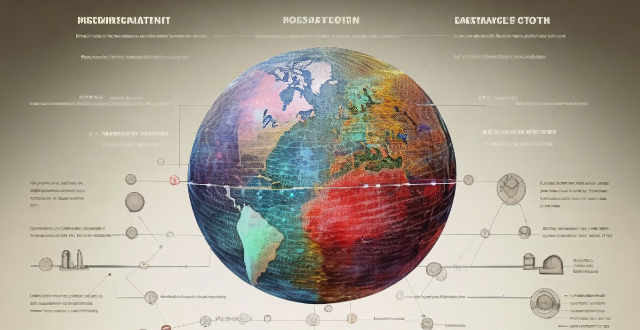
What are some successful examples of youth-led climate action initiatives ?
This article discusses successful youth-led climate action initiatives around the globe, highlighting examples like Fridays for Future, US Youth Climate Strike, and Earth Uprising. These movements have achieved significant milestones in raising awareness, inspiring policy changes, and fostering collective action towards addressing climate change.
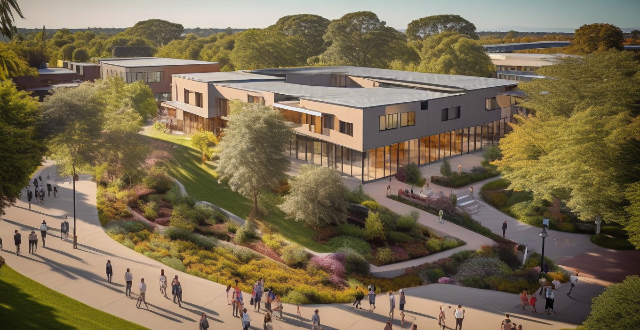
How can immigrants effectively integrate into a new community ?
Effective integration of immigrants into a new community involves learning the local language, engaging with the community, embracing cultural differences, building a support network, seeking out resources, and being patient and persistent. These strategies can help immigrants communicate effectively, find employment opportunities, understand the culture, make friends, and navigate the legal processes involved in immigration.

How has climate action evolved over the past decade, and what progress has been made ?
Over the past decade, significant strides have been made in the realm of climate action. This evolution is characterized by increased awareness, global mobilization, technological advancements, and policy changes aimed at mitigating the effects of climate change. Key aspects of this progress include: 1. **Increased Awareness and Global Mobilization**: Public awareness about climate change has grown substantially, thanks to educational initiatives, media campaigns, youth-led movements like Fridays for Future, and UNFCCC COP conferences. 2. **Technological Advancements**: Remarkable progress in renewable energy technologies, electric vehicles, energy efficiency, and carbon capture has been made. 3. **Policy Changes and Legal Frameworks**: Many countries have implemented policies to reduce greenhouse gas emissions and promote clean energy. The Paris Agreement set a global framework for combating climate change. 4. **Financial Investments and Market Mechanisms**: Green finance, carbon pricing, and investment in sustainable infrastructure are on the rise. 5. **Corporate Responsibility and Innovation**: Corporations are setting sustainability goals, managing their supply chains more sustainably, and consumers are choosing environmentally responsible products. 6. **Civil Society and Community Action**: Grassroots organizations lead community-based actions, local communities establish renewable projects, and NGOs advocate for stronger climate policies. 7. **Research and Collaboration**: Ongoing scientific research, international platforms, and open data initiatives foster collaboration and better understanding of climate solutions. 8. **Challenges and Setbacks**: Despite advancements, challenges remain, including political will, economic barriers, inequity, and loss and damage from climate change. In conclusion, while notable progress has been made in climate action over the past decade, continued efforts across all sectors will be required to meet ambitious goals and limit climate change impacts.

How can individuals contribute to the safe management of hazardous chemicals in their community ?
The article outlines various ways individuals can contribute to the safe management of hazardous chemicals in their community. It emphasizes the importance of education, staying informed, taking action, prevention and preparedness, and community collaboration. Individuals are encouraged to research common hazardous chemicals, identify potential health effects, monitor local news, attend public meetings, report leaks and spills, support strict regulations, participate in cleanup efforts, implement safe practices at home, create an emergency plan, build partnerships, and encourage transparency. By taking these steps, individuals can play a crucial role in ensuring the safe management of hazardous chemicals within their communities.

How can we raise awareness about the importance of community climate adaptation ?
To raise awareness about the importance of community climate adaptation, several strategies can be employed: 1. **Education and Outreach Programs**: Conduct workshops, engage schools, collaborate with media outlets, and develop informational materials to educate people about climate change and its implications. 2. **Community Engagement Initiatives**: Encourage public participation in discussions, foster partnerships with local organizations, and promote civic leadership to drive climate adaptation efforts. 3. **Visual Aids and Creative Approaches**: Use art, performances, exhibits, infographics, and other creative means to communicate the importance of climate resilience. 4. **Online Platforms and Social Media**: Leverage digital tools like social media campaigns, online forums, virtual reality experiences, and interactive apps to reach a wider audience. 5. **Policy Advocacy and Support**: Advocate for favorable policies, provide financial incentives, and support legislation that enhances community resilience against climate change.

How can we promote sustainable consumption ?
Sustainable consumption is a key factor in achieving a sustainable future. It involves making conscious choices about the products we buy, the resources we use, and the impact we have on the environment. Here are some ways to promote sustainable consumption: 1. Education and Awareness: Raise awareness about the importance of sustainable consumption; provide information on sustainable products and services; encourage responsible consumption habits. 2. Government Policies and Incentives: Implement policies that support sustainable consumption; offer incentives for sustainable practices; encourage circular economy principles. 3. Corporate Responsibility and Innovation: Encourage corporate responsibility; foster innovation in sustainable products and services; collaborate with stakeholders. 4. Community Action and Collaboration: Organize community events; create networks of sustainable businesses; engage with schools and youth organizations. By taking these actions at individual, community, business, and government levels, we can collectively move toward a more sustainable future where our consumption patterns support rather than harm the planet.

What role do governments play in implementing climate action plans ?
Governments play a crucial role in implementing climate action plans by setting targets, enacting legislation, providing incentives, investing in research and development, regulating industries, raising public awareness, developing infrastructure, supporting innovation, and engaging in international diplomacy. These actions help reduce greenhouse gas emissions, promote sustainable development, and build resilience against the impacts of climate change.
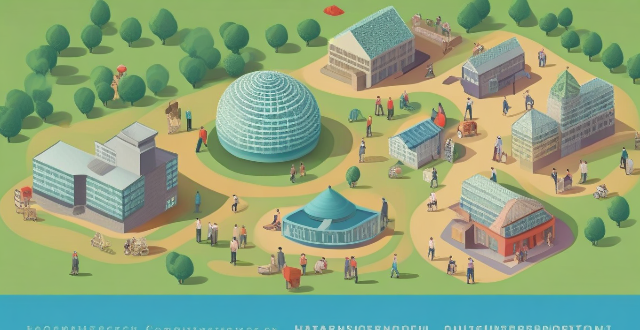
How can we balance the needs of developing countries with those of developed countries when it comes to climate action ?
This article explores strategies for balancing the needs of developing and developed countries in climate action. It discusses economic disparities, environmental impact, finance and technology transfer, capacity building, equitable emission reductions, adaptation support, collaborative research and innovation, and policy coherence as key factors to consider. The article emphasizes that achieving a balance requires recognizing the unique circumstances and needs of both types of countries and implementing strategies such as financial support, technology transfer, capacity building, equitable emission reductions, adaptation support, collaborative research, and policy coherence.

How can we ensure that climate action is consistent with human rights ?
To ensure that climate action is consistent with human rights, we need to adopt a holistic approach that takes into account the social, economic, and environmental dimensions of sustainability. Some strategies include recognizing the interdependence between climate action and human rights, integrating human rights into climate policy, ensuring transparency and accountability, promoting participatory democracy, strengthening legal frameworks, and building capacity and providing support to vulnerable populations. By doing so, we can create a more equitable and just world for all.
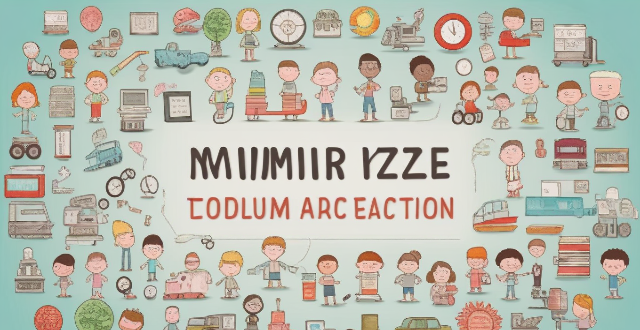
What challenges do young people face when trying to participate in climate action ?
The text summarizes the challenges faced by young people in climate action. These include a lack of awareness and education, limited resources and opportunities, social and political barriers, emotional and psychological challenges, and practical difficulties. Despite these obstacles, it is crucial for young individuals to engage in climate action to create positive changes and contribute to a more sustainable future.

How do people's attitudes towards climate change affect their willingness to take action on environmental issues ?
The text discusses how attitudes towards climate change influence environmental action. It identifies factors like awareness, emotional connection, responsibility, barriers, and incentives that shape willingness to act on environmental issues.

How can businesses be encouraged to take climate action ?
Climate change is a global challenge that requires collective action from businesses. Government regulations and incentives, public pressure, long-term financial benefits, collaboration with other businesses, and education and awareness campaigns are some ways to encourage businesses to take climate action. By taking action, businesses can reduce their environmental impact, save money on utility bills and disposal costs, and benefit from stable sources of renewable energy.

How can we measure the effectiveness of community climate adaptation efforts ?
Measuring the effectiveness of community climate adaptation efforts is crucial for understanding their impact on resilience to climate change. Key steps include setting clear objectives, developing relevant indicators, collecting and analyzing data, transparent reporting, evaluating success, iterative improvement, community engagement, and policy alignment. By following these steps, communities can ensure their adaptation efforts are effective and continuously improved.

How can we ensure that climate action benefits both men and women equally ?
Ensuring gender equality in climate action is crucial for addressing the differential impacts of climate change on men and women. To achieve this, we must recognize gender-specific impacts, encourage gender equality in policy making, integrate gender perspectives in adaptation and mitigation measures, enhance access to resources and services, support capacity building and empowerment, address cultural and social norms, and monitor progress to adjust strategies accordingly. By doing so, we can promote a more equitable future where climate action benefits both genders equally.

What role do community gardens play in city greening efforts ?
Community gardens play a significant role in city greening efforts by providing environmental, social, economic, and urban planning benefits. These gardens improve air quality, enhance biodiversity, and promote soil health. They also foster community building, offer educational opportunities, and contribute to health promotion. Economically, community gardens provide food security and create job opportunities. Integrated into urban planning, they beautify cities and promote sustainable development. Overall, community gardens are vital for ecological health and improving residents' quality of life.

How can social media be used to mobilize young people for climate action ?
The text discusses how social media can be utilized to engage and mobilize young people for climate action. It outlines strategies for raising awareness, fostering dialogue, and driving concrete actions through educational content, influencer partnerships, hashtag campaigns, discussion forums, interactive polls and surveys, user-generated content, volunteer opportunities, online activism, and practical tips for sustainable living. The conclusion emphasizes the potential of social media as a tool for social change and calls for its wise use to shape a brighter future.

How do sports events promote social interaction and community building ?
Sports events play a significant role in promoting social interaction and community building. They bring people together, foster a sense of belonging, and create opportunities for individuals to connect with one another. This is achieved through encouraging participation, building community spirit, providing entertainment and recreation, facilitating networking opportunities, and enhancing diversity and inclusion. By bringing people together around a shared passion for sports, these events create lasting connections and positive experiences that extend far beyond the playing field.
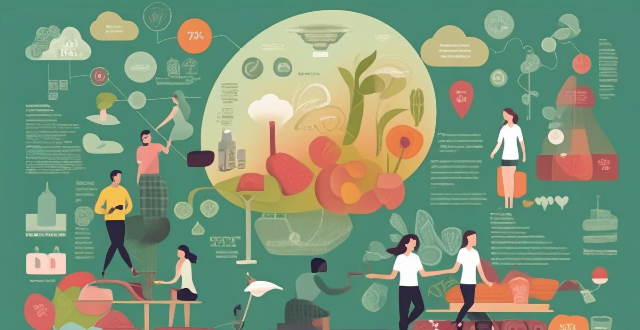
What is the relationship between climate action and sustainable development ?
Climate action and sustainable development are interconnected concepts that aim to create a healthier, more equitable, and prosperous world. They have mutual benefits, as taking action to address climate change can also promote sustainable development. An integrated approach that combines both concepts can lead to better outcomes, considering environmental, social, and economic aspects. Both require a long-term perspective, planning for the future while addressing immediate needs. Recognizing the importance of both concepts and working towards their integration is essential to create a more resilient and adaptable society.

How do sports initiatives support community health and wellbeing in cities ?
Sports initiatives in cities are crucial for promoting physical activity, social interaction, mental health, and overall quality of life. The collaboration between the International Olympic Committee and PATH is a prime example of how these initiatives can make a significant impact on community health. By increasing access to health-enhancing community sport activities, sports initiatives support physical activity, enhance social interaction, improve mental health, raise awareness about health issues, and contribute to economic impact and urban development. These initiatives are valuable investments for city planners and policymakers as they promote community health and wellbeing in urban areas.

What is the impact of climate action on biodiversity and ecosystems ?
Climate action has both positive and negative impacts on biodiversity and ecosystems. Positive effects include reduction in greenhouse gas emissions, increased awareness and education, protection of key habitats, promotion of sustainable practices, and restoration of degraded ecosystems. Negative effects include displacement of local communities, habitat loss and fragmentation, ecosystem disruption, resource competition, and uncertain long-term outcomes. To maximize the benefits of climate action for biodiversity and ecosystems, an integrated approach that considers both environmental and social factors is crucial.